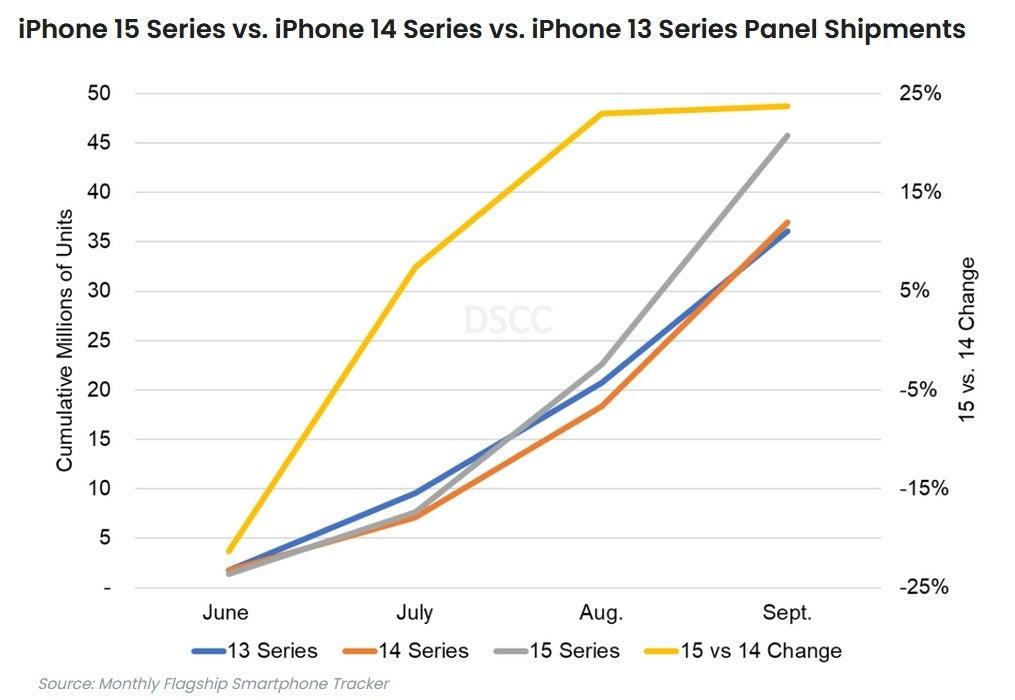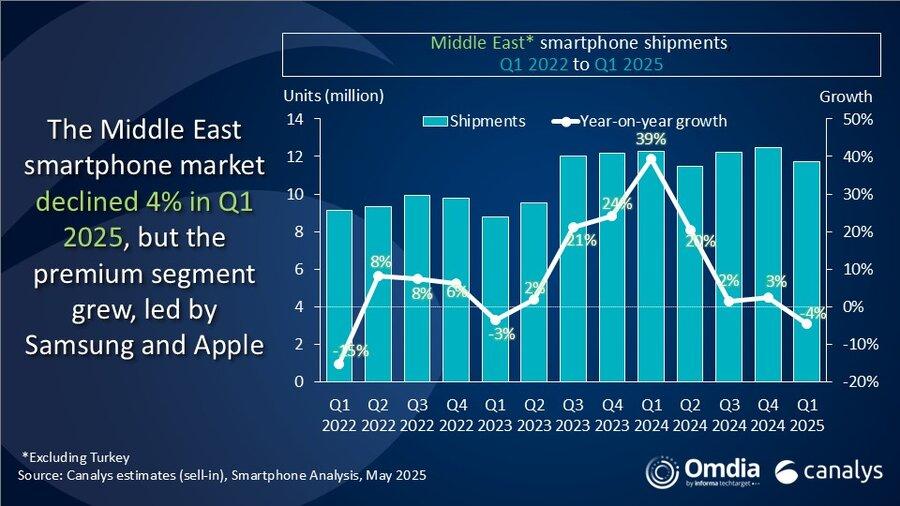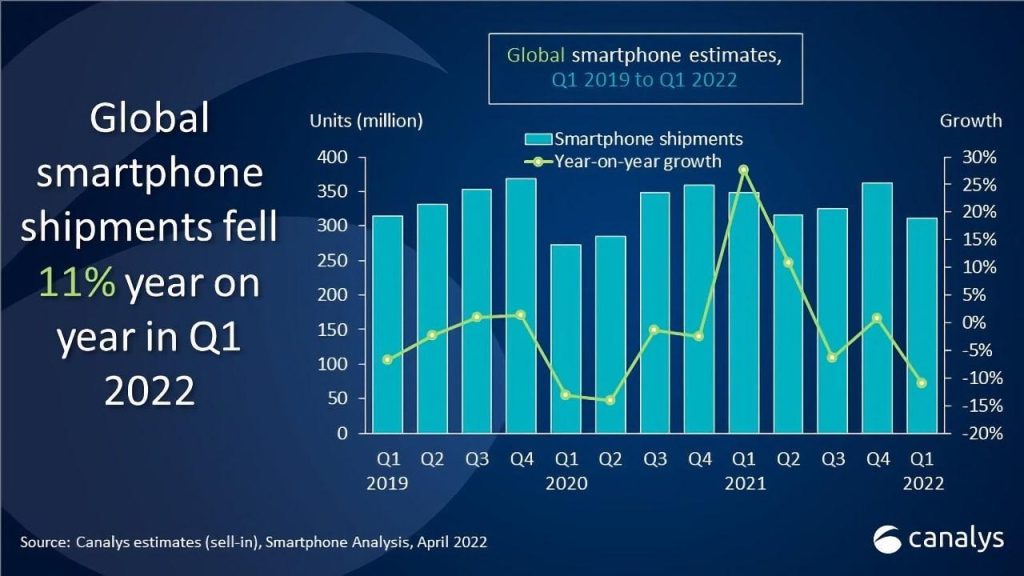In the ever-evolving landscape of the smartphone industry, tides are shifting in unexpected ways. As the dust settles on recent market reports, a striking narrative emerges: iPhone shipments are climbing steadily, defying the usual ebb and flow, while Android devices appear to be faltering under pressure. This phenomenon challenges conventional wisdom about global smartphone dominance and invites a closer look at the forces reshaping consumer preferences, technological innovation, and market dynamics. What’s driving Apple’s upward momentum amid Android’s stumble, and what could this mean for the future of mobile technology?
iPhone Market Surge Unveils Shifting Consumer Preferences
Recent data reveals a remarkable shift in the smartphone landscape, with Apple’s iPhone experiencing a notable surge in shipments. Consumers are gravitating towards the sleek design, enhanced camera capabilities, and seamless integration within the Apple ecosystem. This shift highlights a broader trend where users prioritize user experience and brand reliability over the diverse specifications often championed by Android manufacturers. The surge also reflects Apple’s strategic release cycles and aggressive marketing campaigns, which have reignited interest among both loyal customers and new adopters.
Meanwhile, Android manufacturers face growing challenges, as evidenced by a downturn in global shipments. Fragmentation and inconsistent software updates have contributed to waning consumer confidence. Key factors driving this downturn include:
- Over-saturated market with numerous brands vying for attention
- Rising competition within mid-range and premium segments
- Consumer fatigue over complex customization options
| Platform | Q1 Shipments (Millions) | Year-over-Year Change |
|---|---|---|
| iPhone | 75 | +12% |
| Android | 120 | -8% |

Analyzing the Factors Behind Android’s Declining Shipments
Various market dynamics have converged to create a challenging environment for Android devices, leading to a notable downturn in their global shipments. Among the most influential factors is the escalating competition from Apple’s iPhone, which is increasingly capturing mid-range and premium users with its consistent updates, ecosystem integration, and aggressive marketing strategies. Additionally, supply chain disruptions have disproportionately affected several key Android manufacturers, hindering their ability to meet consumer demand efficiently. Meanwhile, the saturation of inexpensive Android smartphones in emerging markets has led to diminishing returns, as consumers delay upgrades or opt for cost-effective alternatives.
Several underlying causes contribute to this shipment decline:
- Brand Fragmentation: An oversupply of diverse Android models creates confusion and dilutes brand loyalty.
- Software Inconsistencies: Variability in OS updates across devices affects user experience and security perception.
- Economic Constraints: Price sensitivity in key regions limits high-end Android sales.
- Consumer Behavior Shift: A growing preference for long device replacement cycles undermines frequent purchasing.
| Factor | Impact Level | Trend |
|---|---|---|
| Supply Chain Disruptions | High | Worsening |
| Brand Fragmentation | Medium | Stable |
| Price Sensitivity | High | Increasing |
| Software Update Gaps | Medium | Improving |

Implications for Smartphone Manufacturers and Retailers
Smartphone manufacturers must now reassess their strategic plans in light of the clear shift in consumer preference. Innovation and differentiation will become more critical than ever, as brands attempt to reclaim lost market share from Android’s downturn. Retailers, on their part, should pivot their marketing tactics towards promoting high-demand iPhone models, capitalizing on their growing popularity to drive foot traffic and increase sales. Enhancing customer experience through exclusive bundles or trade-in offers could further solidify loyalty and maximize revenue streams.
The competitive landscape also demands attention to supply chain agility and inventory management. Companies that adapt quickly by forecasting trends accurately and maintaining lean inventories can avoid overstocking or shortages. Below is a concise overview of practical steps that manufacturers and retailers might consider:
- Manufacturers: Focus on cutting-edge features such as AI integration and sustainability.
- Retailers: Prioritize stocking flagship models with flexible return policies.
- Both: Invest in targeted digital marketing campaigns highlighting unique selling points.

Strategic Approaches to Capitalize on Emerging Market Trends
To leverage the upward trajectory of iPhone shipments amid a declining Android market, companies must adopt agile strategies that align with evolving consumer preferences. Emphasizing innovation and ecosystem integration enables brands to enhance user loyalty and capitalize on Apple’s expanding user base. Key tactics include:
- Investing in app development tailored for iOS to attract premium users.
- Focusing marketing efforts on Apple’s strength areas like privacy and seamless device interoperability.
- Partnering with accessory manufacturers to offer value-added products enhancing the iPhone experience.
Meanwhile, businesses operating within the Android ecosystem should reevaluate their approach by harnessing emerging technologies and exploring new markets. Strengthening customization options and optimizing for diverse hardware can mitigate the challenges posed by Android’s market contraction. The following matrix illustrates how strategic focus areas differ between iPhone and Android:
| Strategy | iPhone | Android |
|---|---|---|
| Product Development | Premium Apps & Services | Wide Compatibility & Customization |
| Marketing | Privacy & Ecosystem Integration | Affordability & Variety |
| Partnerships | Luxury Accessories & Services | Local Manufacturers & Operators |
To Conclude
As the tides of the smartphone market ebb and flow, the recent surge in iPhone shipments signals a compelling shift in consumer preference, while Android’s stumble invites reflection on its path ahead. Whether this momentum will sustain or spark new innovations remains to be seen, but for now, Apple’s ascent reminds us that in the ever-evolving world of technology, adaptability and appeal often dictate who leads the charge-and who must regroup.

